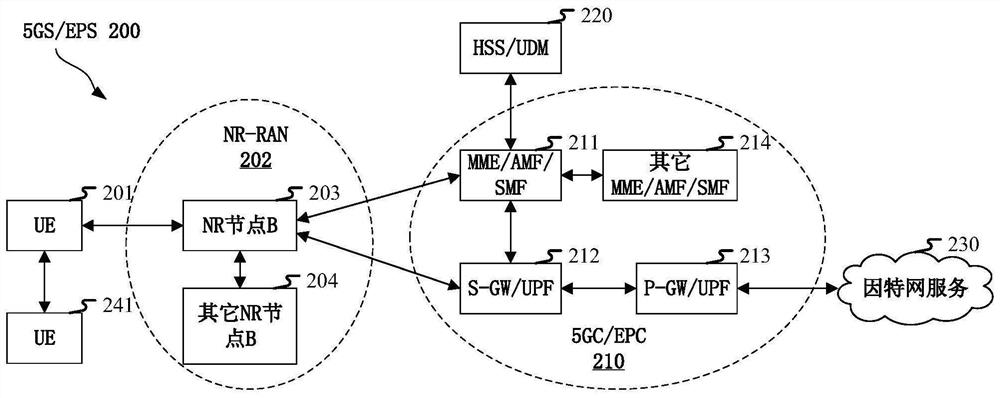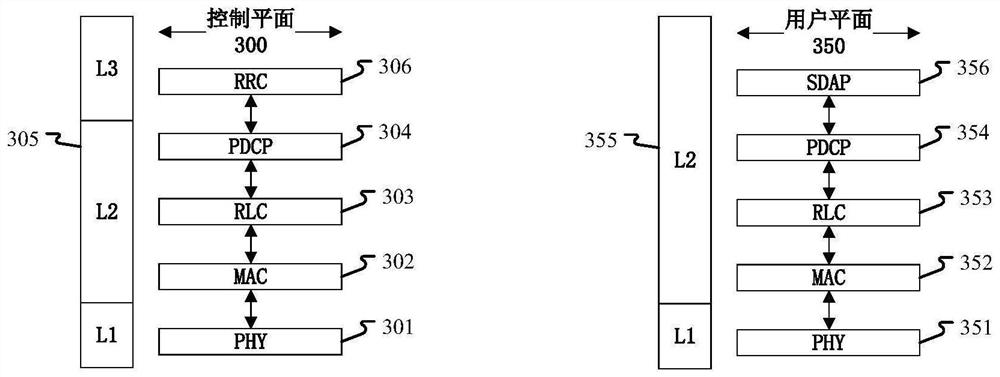A method and device used in a node for wireless communication
A node device and transmission node technology, applied in wireless communication, vehicle wireless communication service, transportation and packaging, etc., can solve problems such as TXUE conflict and loss, and achieve the effect of solving transmission delay and resource waste
- Summary
- Abstract
- Description
- Claims
- Application Information
AI Technical Summary
Problems solved by technology
Method used
Image
Examples
Embodiment 1
[0120] Embodiment 1 illustrates the processing flow chart of the first node of an embodiment of the present application, as shown in the appendix. figure 1 shown. in the attached figure 1 , each box represents a step. In Embodiment 1, the first node in this application first executes step 101 to receive the first signaling; then executes step 102 to send the second signaling; finally executes step 103 to send the first signal in the second time-frequency resource set a signal; the first signaling is used to determine a first identity and a first priority; the second signaling is used to indicate a second identity and a second priority; the second time-frequency resource set belongs to target resource sub-pool; the first signaling is used to determine a reference time-frequency resource set, the first time-frequency resource set is related to the reference time-frequency resource set, and the second signaling is used to indicate the first time-frequency resource set Two time...
Embodiment 2
[0246] Embodiment 2 illustrates a schematic diagram of a network architecture according to the present application, as shown in the accompanying figure 2 shown.
[0247] attached figure 2 A diagram illustrating the network architecture 200 of the 5G NR, LTE (Long-Term Evolution) and LTE-A (Long-Term Evolution Advanced) systems. The 5G NR or LTE network architecture 200 may be referred to as 5GS (5G System) / EPS (Evolved Packet System) 200 by some other suitable term. The 5GS / EPS 200 may include one or more UE (User Equipment, User Equipment) 201, NG-RAN (Next Generation Radio Access Network) 202, 5GC (5G Core Network, 5G Core Network) / EPC (Evolved Packet Core, Evolved Packet Core) 210, HSS (Home Subscriber Server, Home Subscriber Server) / UDM (Unified Data Management) 220 and Internet Services 230. 5GS / EPS can be interconnected with other access networks, but not shown for simplicity these entities / interfaces. As shown, 5GS / EPS provides packet-switched services, however th...
Embodiment 3
[0265] Embodiment 3 shows a schematic diagram of an embodiment of the radio protocol architecture of the user plane and the control plane according to the present application, as shown in the appendix. image 3 shown. image 3 is a schematic diagram illustrating an embodiment of a radio protocol architecture for the user plane 350 and the control plane 300, image 3 Exposing the control plane 300 with three layers for a first communication node device (UE, gNB or RSU in V2X) and a second communication node device (gNB, UE or RSU in V2X), or between two UEs Radio Protocol Architecture: Layer 1, Layer 2, and Layer 3. Layer 1 (L1 layer) is the lowest layer and implements various PHY (Physical Layer) signal processing functions. The L1 layer will be referred to herein as PHY301. Layer 2 (L2 layer) 305 is above the PHY 301 and is responsible for the link between the first communication node device and the second communication node device and the two UEs through the PHY 301 . The ...
PUM
 Login to View More
Login to View More Abstract
Description
Claims
Application Information
 Login to View More
Login to View More - R&D
- Intellectual Property
- Life Sciences
- Materials
- Tech Scout
- Unparalleled Data Quality
- Higher Quality Content
- 60% Fewer Hallucinations
Browse by: Latest US Patents, China's latest patents, Technical Efficacy Thesaurus, Application Domain, Technology Topic, Popular Technical Reports.
© 2025 PatSnap. All rights reserved.Legal|Privacy policy|Modern Slavery Act Transparency Statement|Sitemap|About US| Contact US: help@patsnap.com



